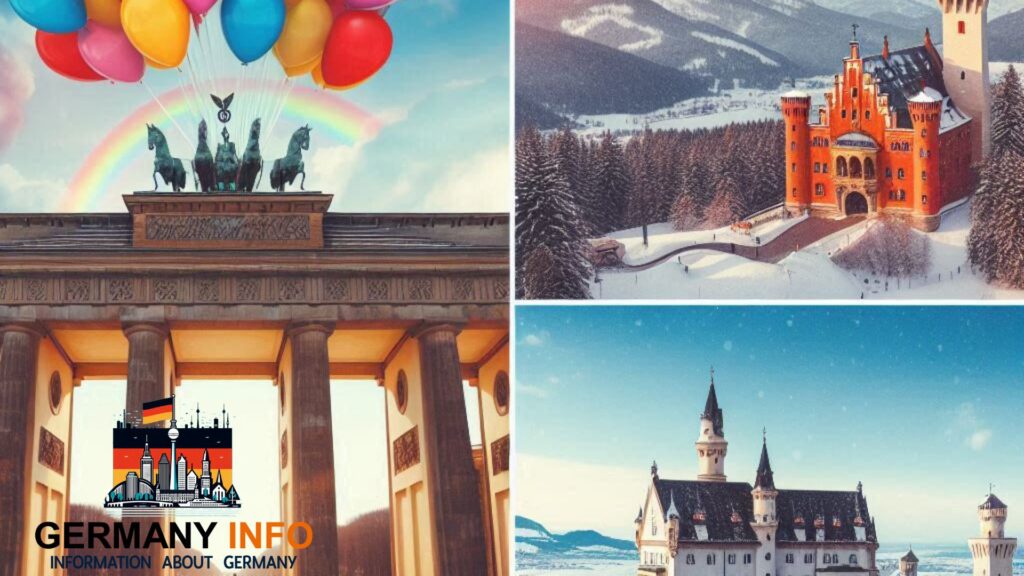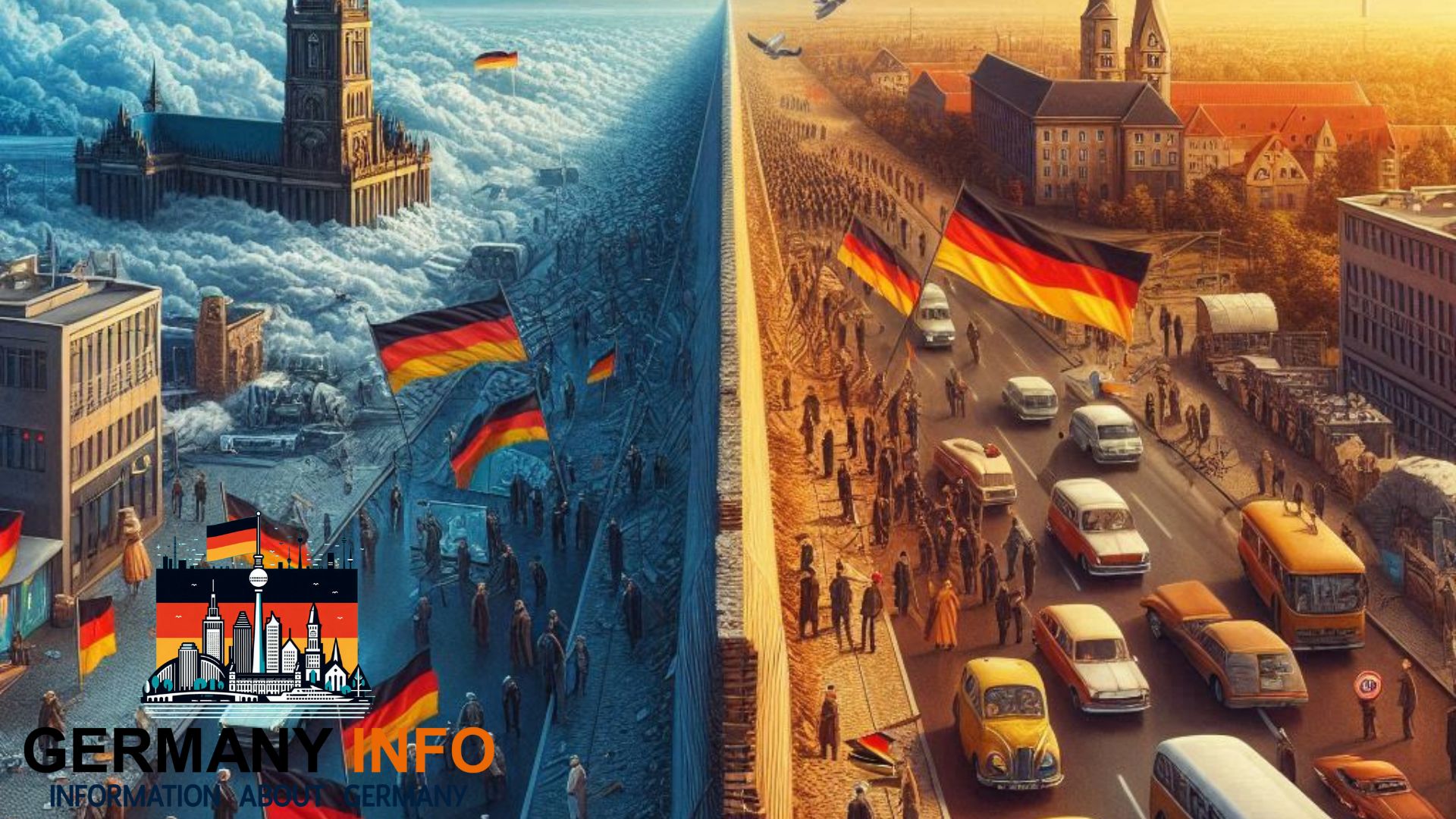The division and reunification of Germany is a significant chapter in the nation’s history, profoundly shaping its political, social, and economic landscape. After World War II, Germany was divided into East and West, symbolizing the broader geopolitical conflict of the Cold War. This division persisted until the fall of the Berlin Wall in 1989, leading to the reunification of Germany in 1990. This article explores the causes, consequences, and eventual resolution of this division.
The Division of Germany
Post-World War II Context
Following the defeat of Nazi Germany in 1945, the Allied powers—namely the United States, the Soviet Union, the United Kingdom, and France—divided Germany into four occupation zones. Berlin, the capital, was similarly divided despite being located deep within the Soviet zone. This division was initially intended as a temporary measure until a peace treaty could be negotiated.
Emergence of East and West Germany
As ideological tensions between the Soviet Union and the Western Allies escalated, the division became more permanent. In 1949, two separate German states were established: the Federal Republic of Germany (FRG) in the West, and the German Democratic Republic (GDR) in the East. The FRG was aligned with the Western Bloc and adopted a capitalist economy, while the GDR, under Soviet influence, implemented a socialist system.
Life in East and West Germany

Political Systems
The FRG developed a democratic political system with multiple parties, free elections, and a strong emphasis on individual rights and freedoms. In contrast, the GDR was a one-party state dominated by the Socialist Unity Party (SED). Political dissent in the GDR was suppressed, and the state maintained extensive surveillance over its citizens through the Stasi, the secret police.
Economic Differences
Economically, the FRG experienced rapid growth, known as the “Wirtschaftswunder” or economic miracle, aided by the Marshall Plan and a market-oriented economy. By the 1960s, West Germany had become one of the world’s leading economies. Meanwhile, the GDR struggled with economic inefficiencies typical of planned economies, leading to lower living standards compared to the West.
Social and Cultural Impact
The division had profound social and cultural impacts. Families were split, and travel between East and West was severely restricted. The FRG enjoyed a vibrant cultural scene influenced by Western media and freedom of expression, while the GDR promoted socialist realism in arts and restricted access to Western cultural products.
The Berlin Wall
Construction of the Wall
In response to a mass exodus of East Germans fleeing to the West through Berlin, the GDR, with Soviet backing, constructed the Berlin Wall in 1961. The Wall became the most potent symbol of the Cold War, physically and ideologically dividing the city and its people.
Life with the Wall
The Berlin Wall had a devastating effect on those living in its shadow. Families and friends were separated, and numerous individuals lost their lives attempting to escape to the West. The Wall stood as a constant reminder of the oppressive nature of the GDR regime and the broader division of Germany.
The Path to Reunification
Political Changes in the Soviet Union
By the late 1980s, significant political changes in the Soviet Union under Mikhail Gorbachev, such as Glasnost (openness) and Perestroika (restructuring), weakened Soviet control over Eastern Europe. These reforms, coupled with economic difficulties, emboldened opposition movements within the GDR.
Rise of Opposition Movements
In 1989, peaceful protests erupted in the GDR, most notably the Monday demonstrations in Leipzig, demanding political reforms, freedom of travel, and democratic rights. These protests, combined with increasing pressure from the international community, forced the GDR government to consider reforms.
Fall of the Berlin Wall
On November 9, 1989, following a series of bureaucratic missteps and mounting public pressure, the East German government announced that citizens could freely cross the border. That night, thousands of East Berliners flocked to the Wall, and guards, overwhelmed and unsure of their orders, allowed them to pass. The Berlin Wall had fallen, signaling the beginning of the end for the GDR.
Reunification of Germany
The Process of Reunification
The fall of the Berlin Wall set in motion the process of German reunification. In 1990, extensive negotiations took place involving the two German states, the four Allied powers, and other European nations. The Two Plus Four Agreement, signed on September 12, 1990, effectively ended the post-World War II status of Germany, paving the way for reunification.
Economic and Social Integration
Reunification posed significant economic and social challenges. The FRG absorbed the economically weaker GDR, leading to substantial financial transfers and investments in infrastructure and social services in the East. Despite these efforts, disparities between the former East and West persisted for many years.
Political and Cultural Impact
Politically, reunification led to the extension of West Germany’s Basic Law (Grundgesetz) to the East, establishing a unified democratic state. Culturally, reunification brought about a period of adjustment and reconciliation, as Germans from both sides of the former divide worked to bridge the differences that had developed over decades of separation.
Legacy of Division and Reunification
Lessons Learned
The division and reunification of Germany serve as a powerful reminder of the impacts of ideological conflicts and the resilience of the human spirit. The peaceful revolution in East Germany highlighted the importance of civil society and grassroots movements in effecting political change.
Contemporary Germany
Today, Germany stands as a unified nation, playing a leading role in the European Union and on the global stage. The experiences of division and reunification have shaped its identity, emphasizing values of democracy, freedom, and human rights.
The division and reunification of Germany remain pivotal events in the nation’s history. From the post-war division and the contrasting lives in East and West, to the fall of the Berlin Wall and the challenges of reunification, this period offers profound insights into the consequences of political ideologies and the enduring quest for unity and freedom. As Germany continues to evolve, the lessons from this chapter resonate, reminding us of the importance of resilience, reconciliation, and hope for a better future.

